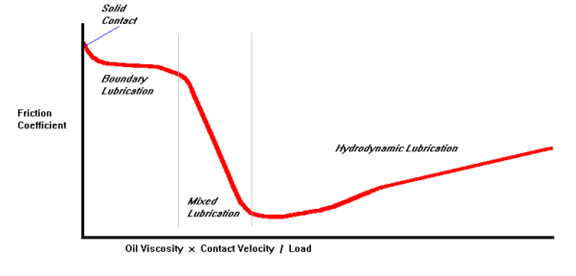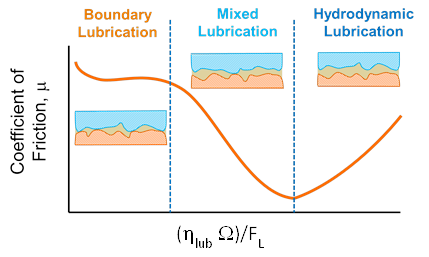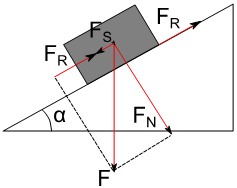
| Overview |
| Introduction to Tribology |
| Test Variables |
The science of tribology (Greek ' tribos' means rubbing) concentrates on Contact Mechanics of moving Interfaces that generally involve energy dissipation. It includes the study of adhesion, friction, lubrication and wear. The instruments are referred to as tribometers.
Leonardo da Vinci (1452-1519) is looked at to be the father of tribology. He studied friction, lubrication, wear. Guillaume Amontons (1663-1705) found that the friction force depends on the load and is independent of contact area. John Theophilius Desanguliers (1683-1744) set up first models to explain friction. He also found that friction depends on adhesion/cohesion forces. Leonhard Euler (1707-1783) introduced the friction factor CoF 'µ ' . Charles Augustin Coulomb (1736-1806) found that the kinetic friction is independent on the sliding velocity.
These pioneering investigations can be summarized in the following 3 laws for dry friction:
Osborne Reynolds and Nikolai Pavlovich (1880) recognized that the hydrodynamic nature of lubrication. Richard Stribeck (1902) found that the hydrodynamic theory breaks down below a critical thickness threshold (Stribeck curve). W.B Hardy (1919) proposed the theory of Boundary lubrication in the ultrathin film regime of the lubricant. Bowden and Tabor applied the concept of adhesion (Desanguliers) for dry friction.
In lubricated systems, the friction factor depends on the viscosity of the lubricant, the sliding speed, the load (normal force), etc. This dependence is represented in the Stribeck curve.


The friction coefficient CoF (µ) is plotted as a function of a combination of lubricant viscosity (hlub, axial load force (FL) and velocity (Ω). At high values, the two bodies are separated by a gap d. This is the region of hydrodynamic lubrication and the load is proportional to Ωh/d (Reynolds' steady state equation for fluid film lubrication). As the value on the x-axes decreases, the thickness of the lubrication film decreases and the direct solid contact between the friction partners takes place at contacts points (asperities). This is the region of mixed lubrication and the CoF increases with decreasing x-value. At very high loads, direct solid-solid contact between the surfaces leads to boundary lubrication; hydrodynamic lubrication disappears.
Euler provided the first mathematical approach to tribology with a geometrical resistance theory of "dry" friction (Interlocking asperity theory). Two terms have been defined, static and dynamic friction.
The static friction is the tangent of the asperity angle (tana) and the dynamic friction coefficient is the kinetic term (see below).
Consider the static equilibrium of a cuboid in contact with an inclined plane. The normal force FN, the friction force FR are given by the slope a and the weight F according to:
FN=Fcosa and
FR+FS=Fsina=> FR=Fsina-FS; FS being the parallel sliding force.

The friction coefficient is per definition:
µ=FR/FN
(friction force divided by the load). Inserting the expressions above for FN and FR gives
µ=tana- FS/(Fcosa)
This expression represents the static friction as long as FS=0 (no sliding) and the kinetic friction if FS≠0 (sliding occurs). With the parallel sliding force FS=2sF/gt2 (s =sliding distance), the kinetic friction reduces to:
µ=tana-2s/(ft2cosa)
Wear is the continuous loss of material at the surface of a solid body, due to the mechanical contact and relative motion of the contact partners (either solid, fluid or gas)
Friction mechanisms are the motion preventing energy dissipation elementary processes at the contact points of a tribological system.
Adhesion/cohesion contributions involve the formation and breaking of adhesive connections.
Abrasion involves the removal of softer material by the harder counter part.
The tribo-rheometry accessory requires the calculation of a set of new variables. The following variables are available when a tribo-rheometry geometry is used in TRIOS:
The tribo-rheometry geometry generates three new geometry constants: the friction force constant KF, the load force constant KL and the sliding speed constant Kv. These constants are used to calculate the new variables from the raw signals torque (M), velocity (Ω), displacement (q) and normal (axial) force FZ.